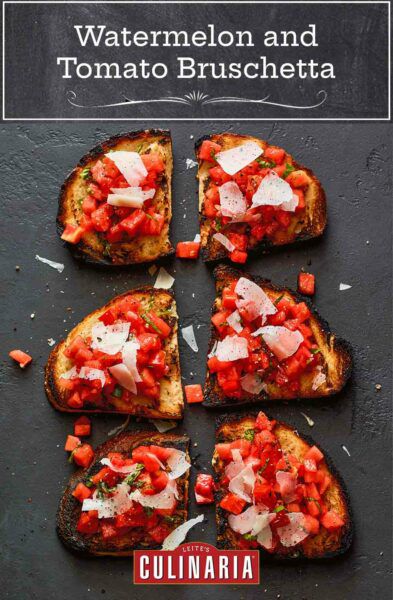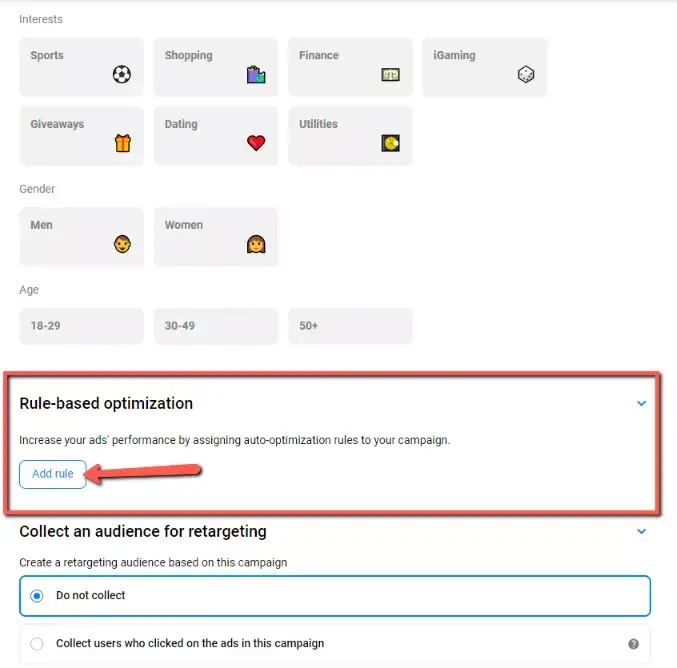

Watermelon and tomato bruschetta is a delightfully refreshing twist on the kind you’ve been making up until now. Garlic, basil, and pecorino cheese work perfectly with the crisp and unexpected sweetness of the melon.

Adapted from James Briscione and Brooke Parkhurst | Flavor for All | Houghton Mifflin Harcourt, 2020
I’m always looking for that big flavor match. What stands out about the South to me is the diversity of quality ingredients that match together in incredible new ways, like diced up watermelon for bruschetta. The beauty of this dish is the visual trick it plays: when mixed together, the cubes of watermelon and tomato are nearly indiscernible, while they alternate savory and sweet bursts on the palate.– James Briscione and Brooke Parkhurst
Watermelon and Tomato Bruschetta

You’re probably not thinking garlic, basil, and cheese with your watermelon, but trust us on this one. It’s the perfect bruschetta for summer.
-
Brush both sides of the slices of sourdough with 2 tablespoons of olive oil. Using a hot skillet or grill, toast the bread on both sides until lightly charred on the edges, 2 to 3 minutes per side. Alternatively, you can use a toaster, toaster oven, or broiler.
Allow the bread to toast as long as possible without burning. This will allow it to hold the bruschetta mixture without soaking up as much juice.
-
Rub one side of the toasted bread slices with the cut side of the garlic cloves.
-
Return the drained watermelon and tomatoes to the reserved bowl. Add the remaining 2 tablespoons olive oil and the basil. Gently toss to combine.
-
Spoon the watermelon mixture onto the toasted bread and garnish with pepper and a generous shaving of pecorino.
*How do I pick a perfectly ripe watermelon?
If you’re going to lug that big old watermelon home, you’re going to want to make sure it’s perfect. First, take a look at it. Right away, choose one with good coloring—dark green with light, creamy stripes. And, generally speaking, the riper they are, the more matte they are. Next, pick it up; it should be heavy for its size. Roll it around until you find the field spot—the spot it sat on while ripening in the field. It should be a creamy, yellow-white. Bright white or yellow is a sign that it’s underripe. Finally, look for webbing and spots on the peel. These so-called imperfections are actually the sugar seeping through the rind and you’ll find that particular melon is quite sweet. For a little more in-depth watermelon picking info, check this out and get ready to pick the best watermelons ever.
Serving: 1portionCalories: 336kcal (17%)Carbohydrates: 44g (15%)Protein: 8g (16%)Fat: 15g (23%)Saturated Fat: 2g (13%)Polyunsaturated Fat: 2gMonounsaturated Fat: 10gSodium: 622mg (27%)Potassium: 263mg (8%)Fiber: 2g (8%)Sugar: 7g (8%)Vitamin A: 769IU (15%)Vitamin C: 12mg (15%)Calcium: 41mg (4%)Iron: 3mg (17%)
Originally published July 01, 2021
![]() If you make this recipe, snap a photo and hashtag it #LeitesCulinaria. We’d love to see your creations on Instagram, Facebook, and Twitter.
If you make this recipe, snap a photo and hashtag it #LeitesCulinaria. We’d love to see your creations on Instagram, Facebook, and Twitter.


